8. Donkey Skin (1970)
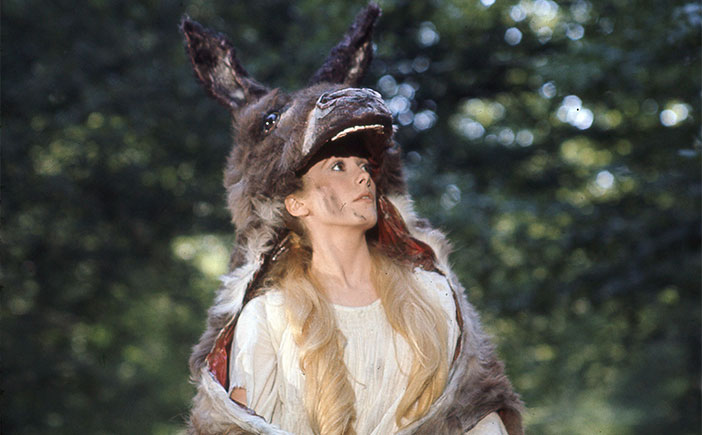
This enchanting French musical fantasy from Jacques Demy reunites the talents he worked with previously on such classics as 1964’s The Umbrellas of Cherbourg and 1967’s The Young Girls of Rochefort, namely lead actress Catherine Deneuve and music composer Michel Legrand. And the results are a very idiosyncratic, occasional strange, but altogether wonderful reworking of the 1695 Charles Perrault fairy tale “Donkeyskin”.
A brief summation of the film wouldn’t do it much justice, and would only raise a red flag; that it tells the seemingly sordid tale of a king who wishes to marry his daughter. But there’s more, of course. Set in a faraway land of magic and mischief, a widower king (Jean Marais) does indeed decree that his daughter, Peau d’âne (Deneuve) will be his bride.
And so, in order to avoid the incestuous union a magical Lilac Fairy (Delphine Seyrig) helps her to escape the kingdom in the skin of a donkey. Soon Peau d’âne will encounter a dreamy prince (Jacques Perrin) and the two will find love, if of course they can avoid the many obstacles in their way.
Surreal and at times intensely emotional, Donkey Skin isn’t your typical children’s fairy tale. Yes, there’s a wealth of disguised sexual innuendo, but there’s also a treasure trove of vivid colors, sumptuous costume design, oddball ornamentation, great music, and many garishly strange delights. Granted, Donkey Skin isn’t a film for everyone, but it might be right for you, weirdo.
7. Harry Potter Film Series (2001–2011)
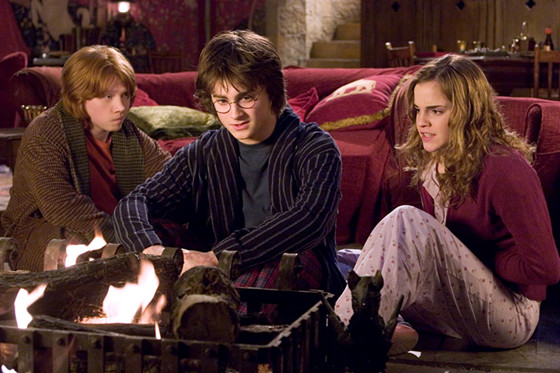
In its enthusiastic press release the American Film Institute referred to the Harry Potter films as “a landmark series; eight films that earned the trust of a generation who wished for the beloved books of J.K. Rowling to come to life on the silver screen. The collective wizardry of an epic ensemble gave us the gift of growing older with Harry, Ron and Hermione as the magic of Hogwarts sprung from the films and into the hearts and minds of Muggles around the world.”
Starting with 2001’s more kid-oriented inauguration Harry Potter and the Philosopher’s Stone and culminating in the much more mature 2011 fantasia Harry Potter and the Deathly Hallows – Part 2, these films not only made household names of Daniel Radcliffe and Emma Watson, they made children (and adults) the world over wonder just what magical house the Sorting Hat would put them in (thanks to Pottermore, “the digital heart of the Wizarding World”, I’m happy to say that I’m a Hufflepuff!).
The films are, of course, greatly indebted to Rowling’s wonderful books (even though it was Steve Kloves and Michael Goldenberg who adapted all of the screenplays), and only diverge from her narrative in largely forgivable ways. Over the tenure of these eight films, four directors commanded the series (Chris Columbus, Alfonso Cuarón, Mike Newell, and David Yates) detailing Harry Potter’s (Radcliffe) quest to overcome his noseless arch-enemy Lord Voldemort (Ralph Fiennes).
Perhaps a tip of the hat to Ursula Le Guin’s Earthsea novels is due (the idea of a school for wizards first appeared therein back in 1964), but don’t let that diminish the world Rowling and company have so lovingly brought to life. And as fans are well aware, the prequel series is well underway, following 2016’s Fantastic Beasts and Where to Find Them and with the promise of four more films, fans of the series still have a lot to look forward to.
6. Ugetsu (1953)
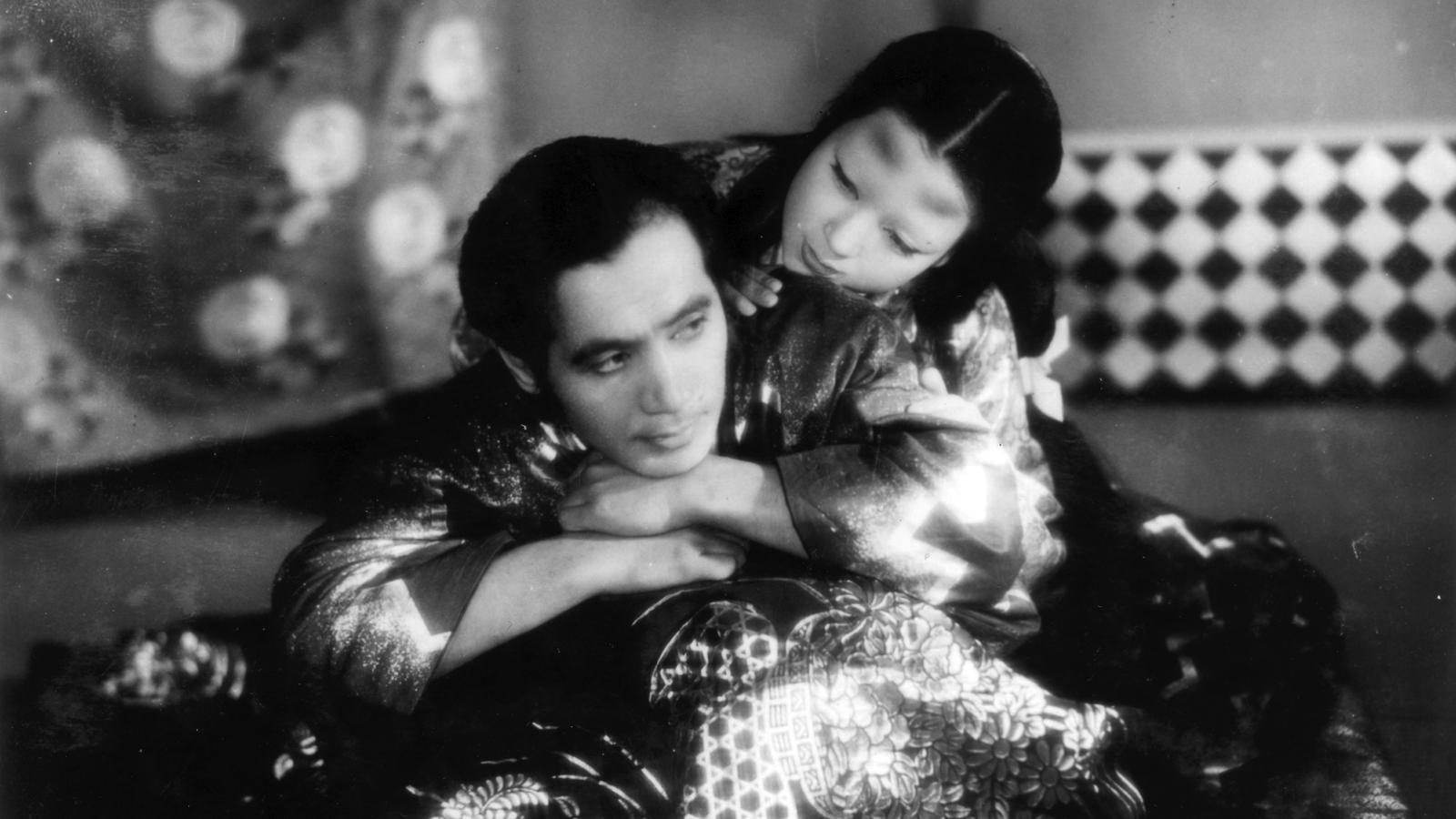
Not only is Ugetsu, Kenji Mizoguchi’s crowning achievement, it’s one of the most beautiful and evocative films of all time. Based on stories from Ueda Akinari’s 1776 book “Ugetsu Monogatari” the film unspools in 16th century Japan where an ambitious village potter named Genjuro (Masayuki Mori) abandons his devoted wife Miyagi (Kinuyo Tanaka) for the riches of the city and the seductive powers of a ghost woman,Lady Wakasa (Machiko Kyō), only to realize too little, too late, what he has truly lost.
Heralded by film critic Donald Richie as “one of the most perfect movies in the history of Japanese cinema” such high praise is a foregone conclusion for this film and for its maker. “Mizoguchi’s style was constructed around flowing, poetic camera movement,” wrote Roger Ebert, and to view Ugetsu is to bare witness to one of cinema’s masters of the mise-en-scène. Elaborate, panoramic, long-take shots are frequent, and far-reaching, and add to the film’s dizzying fantasy elements.
Jean-Luc Godard may have summed it up best when he said that Mizoguchi was “the greatest of Japanese filmmakers. Or, quite simply, one of the greatest of filmmakers.” And to that high praise Taste of Cinema will reiterate that Ugetsu is the height of Mizoguchi’s glory.
5. Pan’s Labyrinth (2006)
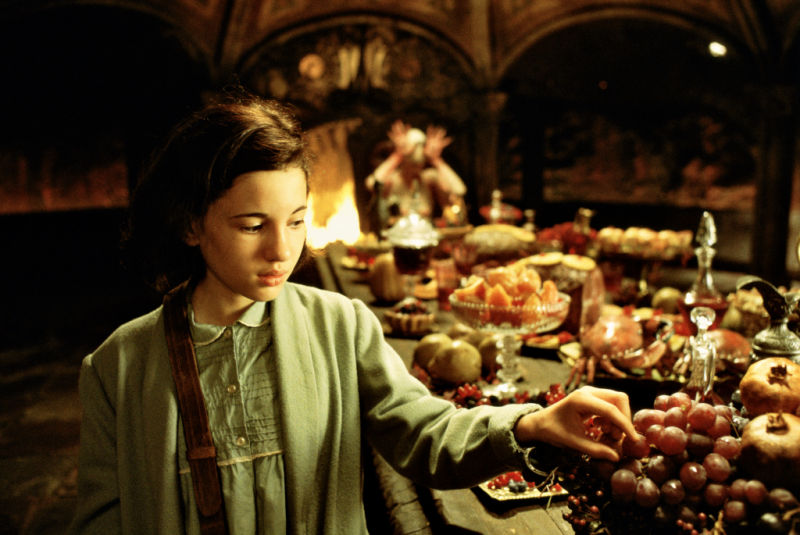
Guillermo del Toro is a veritable master of the macabre and his deeply personal dark fantasy coup de grâce from 2006, Pan’s Labyrinth is a sublime and stunningly beautiful masterpiece. Set in Spain in 1944 we meet young Ofelia (Ivana Baquero) and her mother Carmen (Ariadna Gil), who is pregnant and whose health is diminishing. The two women have just relocated to be with Carmen’s new husband, the sadistic army officer Captain Vidal (Sergi López).
Ofelia takes an instant dislike to the Captain and soon finds distraction in an ancient maze where she encounters the mysterious and otherworldly faun, Pan (Doug Jones). Pan tells Ofelia of her forgotten lineage as the lost Princess Moanna and how she must perform three potentially deadly tasks in order to reclaim her throne and the immortality that goes along with it.
Epic in scope, with a poetic Dickensian influence, tangible excitation, a fabulist, fairytale-like cognizance––Alice in Wonderland is another obvious inspiration––making for an elegant flight of the imagination. But make no mistake, this is no children’s movie.
The violence of the real world around Ofelia is terrifying and extreme, but del Toro, while never sugarcoating anything or Disney-fying his creations still imbues the film with a sense of wonder, danger, artistic ambition, and compelling, tragic, astounding poignancy. Not for the faint of heart no, but for the strong of imagination and for the deeply adventurous and bravely devout. Pan’s Labyrinth is a beautiful and terrifying place to get lost in.
4. La Belle et la Bête (1946)
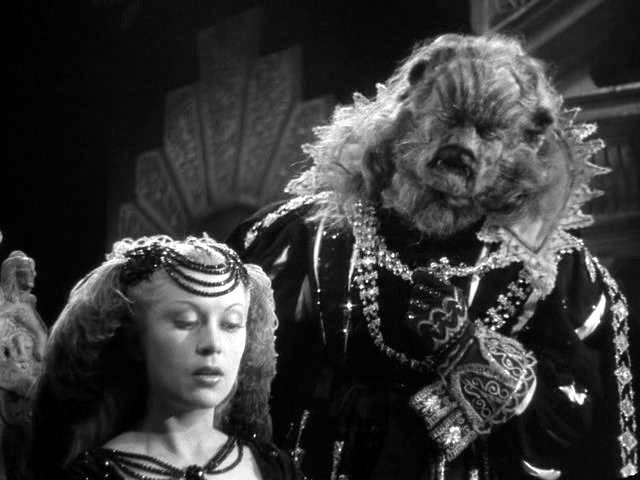
A landmark of fabulist cinematic storytelling from the legendary avant-garde artistic polyglot Jean Cocteau comes the ultimate romantic tragedy, La Belle et la Bête.
A reimagining of the classic fairytale Beauty and the Beast, Cocteau’s version was written by Jeanne-Marie Leprince de Beaumont and focuses on Belle (Josette Day), who’s father (Marcel André) is sentenced to death for plucking a rose from a garden that belongs to Beast (Jean Marais). To spare her father’s life Belle offers herself to the Beast and from their Beast soon falls in love with her.
Astonishing effects, stunning costumes, overpowering visuals, Henri Alekan’s exemplary lensing, dreamy editing techniques, all pulsing and vibrating to its own fevered, weird, and electrical cadence, it’s a frequently nightmarish and ghoulish tear-jerker. And the chemistry between the two leads is beyond question. La Belle et la Bête is one for the ages.
3. The Lord of the Rings Trilogy (2001–2003)
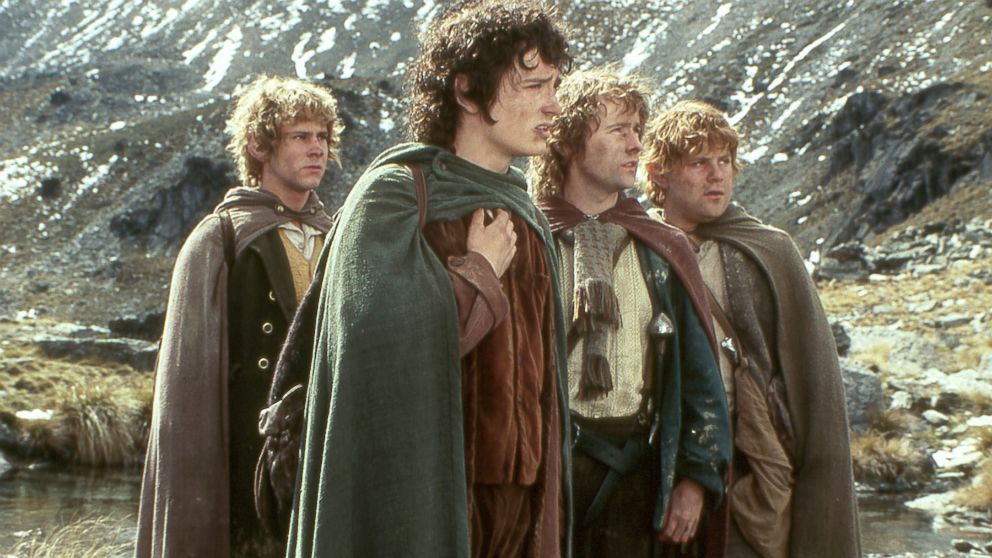
“My precious!”
It’s nothing short of astonishing how Kiwi low-budget splatter comedy king Peter Jackson (Bad Taste [1987], Dead Alive [1992]) miraculously reinvented himself as big budget and even bigger spectacle adapter of J.R.R. Tolkien’s epic and massive three-volume book, The Lord of the Rings.
As fantasy trilogy it’s an unsurpassed and generous masterwork, subtitled The Fellowship of the Ring (2001), The Two Towers (2002) and The Return of the King (2003), the ground-breaking and deservedly award-winning spectacles presented therein are further buttressed by the all-star cast which includes; Sean Astin, Sean Bean, Cate Blanchett, Orlando Bloom, Billy Boyd, John Rhys-Davies, Brad Dourif, Ian Holm, Christopher Lee, Ian McKellen, Viggo Mortensen, Andy Serkis, Liv Tyler, Karl Urban, Hugo Weaving, and Elijah Wood as the intrepid hobbit hero Frodo Baggins.
Awesome and innovative, The Lord of the Rings films may well be the pinnacle of adult-oriented fantasy films, and rightly so.
2. Spirited Away (2001)
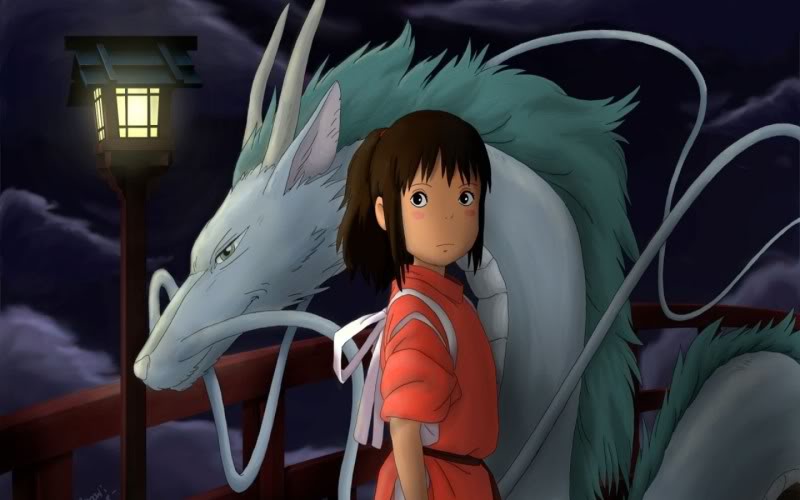
Unlike oh so many mainstream animated films, Hayao Miyazaki constructs imaginative worlds without the condescending expression and over-sentimental characters. Spirited Away is no exception as it tells the adventurous tale of 10-year-old Chihiro Ogino and her parents on their way to their new home when they take a strange detour and stumble upon a novelty town of objet d’art.
The unsettling place they’ve discovered soon becomes populated by spirits, once the sun has gone down. Chihiro must find a way to move amongst the entities, rescue her parents, and figure out a way home.
Taking after literary fabulists from Europe, Spirited Away is Miyazaki’s variation of Lewis Carroll’s Alice in Wonderland, with a dash of A.A. Milne. The hand-drawn scenes radiate with affection, energy, and wild invention.
Miyazaki, with Spirited Away, shares the cultural disparity of his great countrymen, directors who rose to international prominence like Kenji Mizoguchi (1898–1956) and Yasujirō Ozu (1903–63).
Spirited Away is a truly transcendental flight of the imagination, and one steeped in the manga tradition. It also generously offers a compassionate discernment on the ill effects of ecological loss, the perseverance of preparation, of rolling with the punches, the plums of altruism, the force of friendship, and perhaps above all, the gravity of celebrating where you came from and who you are.
1. The Wizard of Oz (1939)
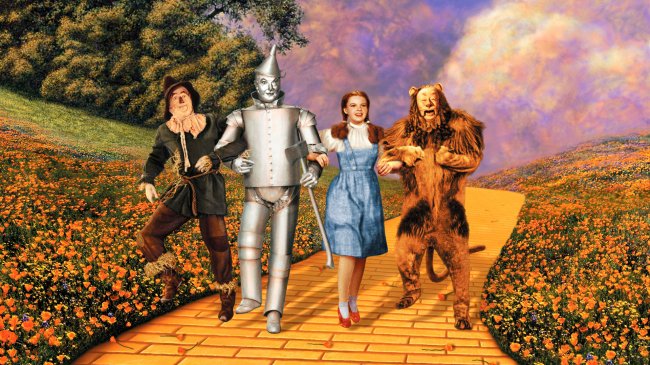
“There’s no place like home,” and there’s no American fantasy film as beloved or as timeless as the Wizard of Oz. This 1939 film from main director Victor Fleming (he shared the director title with George Cukor, Richard Thorpe, King Vidor –– it was a long and grueling production) is easily the most celebrated and successful adaptation to spring from L. Frank Baum’s 1900 children’s book, “The Wonderful Wizard of Oz.”
Faster than you can say “We aren’t in Kansas anymore” a tornado tears through a sepia-toned Kansas and lands young Dorothy (Judy Garland, dazzling) and her little dog, too, Toto, into the Technicolor miracles of the merry old land of Oz. And wouldn’t you know it? Soon Dorothy and her crew (Ray Bolger’s Scarecrow, Jack Haley’s Tin Man, and Bert Lahr’s Cowardly Lion) are tiptoeing down the Yellow Brick Road toward the Emerald City to meet the titular Wizard (Frank Morgan).
Fleeing from the menacing Wicked Witch of the West (Margaret Hamilton, iconic) and her fleet of flying monkeys, few films have captured the popular imagination the way that The Wizard of Oz has.
So much of the film is just one show-stopping sequence, flight from danger, and illustrious musical number after the other, with so many magical and immortal Hollywood moments goose piling one on top of the other.
As author and film historian Mick LaSalle pointed out in a 2009 retrospective piece on Oz for the San Francisco Chronicle, “[for instance the] entire Munchkinland sequence, from Dorothy’s arrival in Oz to her departure on the yellow brick road, has to be one of the greatest in cinema history – a masterpiece of set design, costuming, choreography, music, lyrics, storytelling, and sheer imagination.”
There’s never a wrong time to revisit The Wizard of Oz, and if you’re lucky enough to live near a repertory house that’s showing it on the big screen, it’s a must. A stunning flight of fancy for the ages if ever there was one.
Honorable Mention:
The 7th Voyage of Sinbad (1958, directed by Nathan H. Juran), A Trip to the Moon (1902, directed by Georges Méliès), The Adventures of Baron Munchausen (1988, directed by Terry Gilliam), Chitty Chitty Bang Bang (1968, directed by Ken Hughes), The Chronicles of Narnia: The Lion, the Witch and the Wardrobe (2005, directed by Andrew Adamson), The City of Lost Children (1995, directed by Marc Caro and Jean-Pierre Jeunet), Clash of the Titans (1981, directed by Desmond Davis), Conan the Barbarian (1982, directed by by John Milius), Fantastic Beasts and Where to Find Them (2016, directed by David Yates), The Golden Voyage of Sinbad (1973, directed by Gordon Hessler), Howl’s Moving Castle (2004, directed by Hayao Miyazaki), Highlander (1986, directed by Russell Mulcahy), James and the Giant Peach (1996, directed by Henry Selick), The Jungle Book (2016, directed by Jon Favreau), The Little Mermaid (1989, directed by Ron Clements and John Musker), My Neighbor Totoro (1988, directed by Hayao Miyazaki), The Phantom Carriage (192, directed by Victor Sjöström), Princess Mononoke (1997, directed by Hayao Miyazaki), She (1965, directed by Robert Day), Shrek (2001, directed by Andrew Adamson and Vicky Jenson), Where the Wild Things Are (2009, directed by Spike Jonze), Willow (1988, directed by Ron Howard)
Author Bio: Shane Scott-Travis is a film critic, screenwriter, comic book author/illustrator and cineaste. Currently residing in Vancouver, Canada, Shane can often be found at the cinema, the dog park, or off in a corner someplace, paraphrasing Groucho Marx. Follow Shane on Twitter @ShaneScottravis.